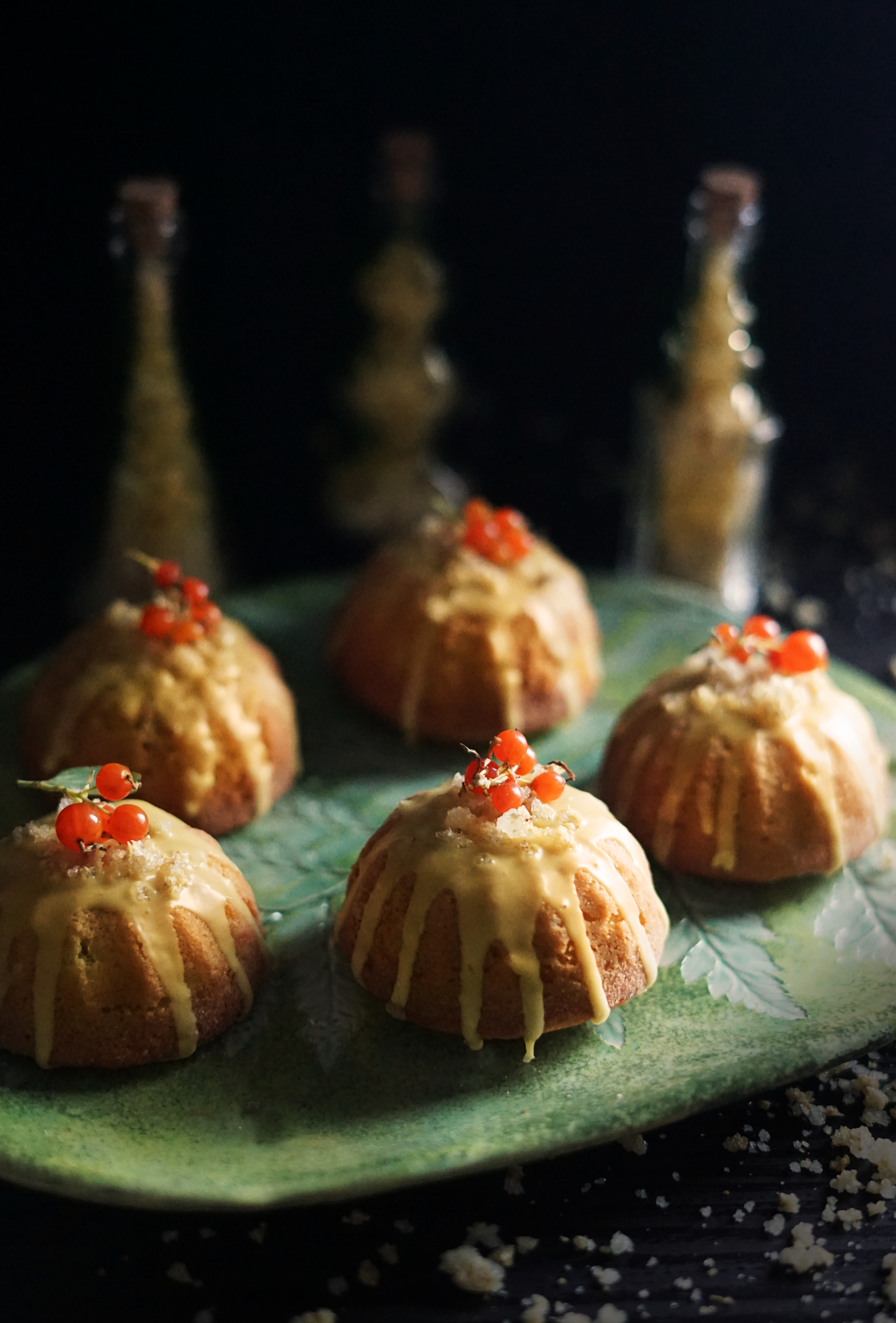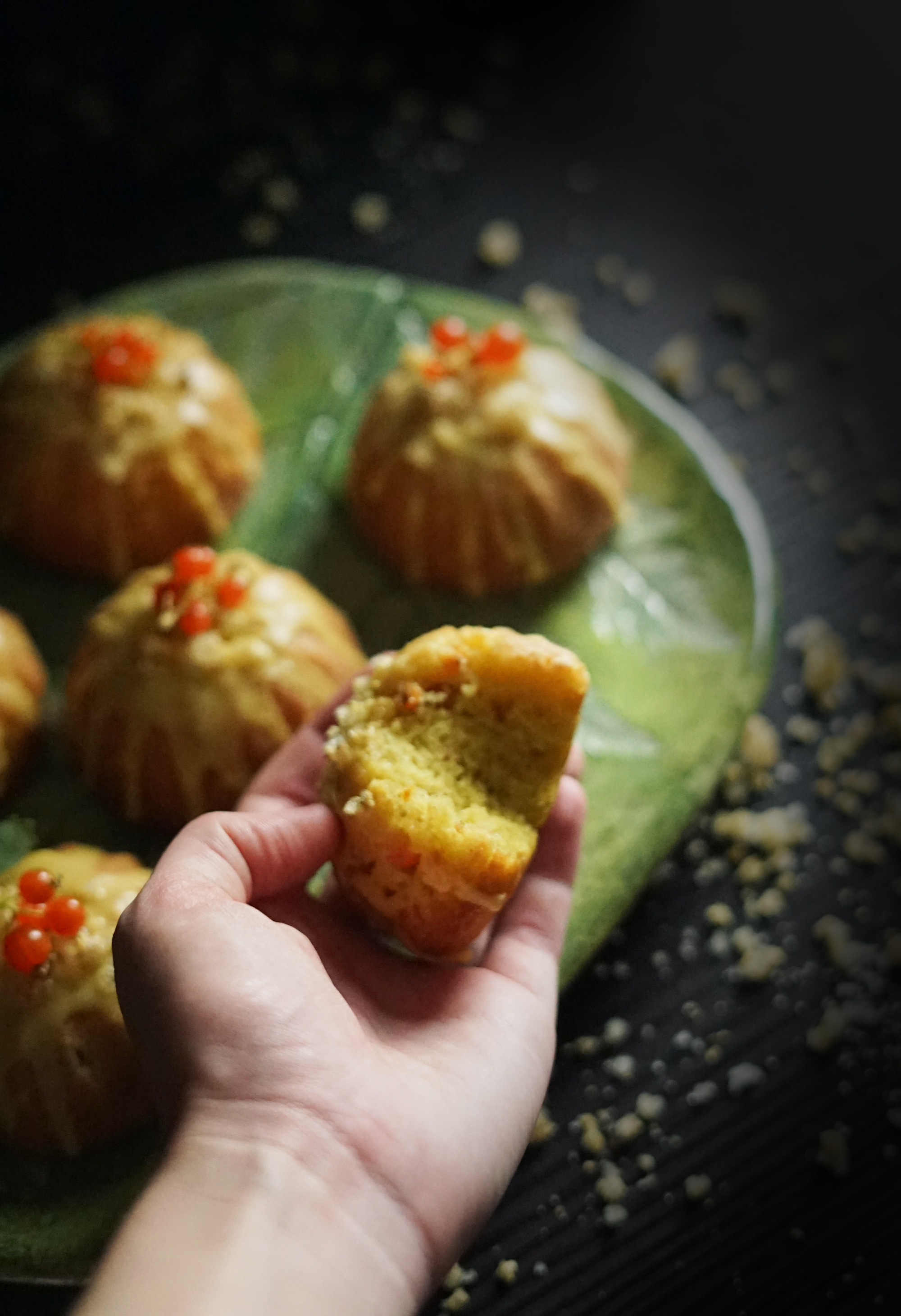Candied Elderflowers and Fairy Cakes: Don't Forget Your Offerings
The magic of foraging also comes with responsibilities. One of the most important rules I adhere to when it comes to foraging is to only take as much as you need. Many wild plants need a high degree of processing once you get home - this process is often referred to as “garbling.” It means preparing your wild finds however you need to - plucking berries from stems, pulling out pine needles, brushing your mushrooms clean, grinding your acorns into flour. It is far too easy to get out in the woods and forage like crazy, only to return home to realize that you have an excessive amount of a wild plant that needs your attention. Looks like that beer and movie night will have to wait!
Here’s my view: plants are living, growing beings that contribute to the overall health of their ecosystem in some way. Removing plants from these environments means you are removing nutrition from the food chain. A little bit, respectfully taken, is fine - as long as you don’t bite off more than you can chew and let these gorgeous wild botanicals go to waste.
Foraging elderflowers is the perfect example of this. Creamy clusters of ethereal blooms with an intoxicating fragrance beckon, and you clamber up the steep hillside to gather “just enough.” Before you know it, your bag is full to bursting and you’ve just canceled any evening plans. It takes a lot of time and a gentle touch to remove fragrant elderflowers from their toxic stems. For those that are used to pre-packaged meals and food deliveries at the touch of a button, this can seem like an overwhelming amount of work.
But to those who truly love working with plants, it can be the most beautiful opportunity! As I methodically pluck blossoms from stems, my mind is free to wander. I start brainstorming what I can use these incredible flowers for. I take in their scent and the soft energy that seems to permeate through them. I let my fingers work while my mind goes exploring. If I have company on my foraging outing, we work together to process our haul. Sitting on the back porch sifting through foraged treats is where some of the most personal and philosophical conversations emerge, fueled no doubt by the plant magic we hold and the soothing rhythm of the process.
In days of old, many civilizations believed that supernatural beings were tied to specific plants, perhaps none moreso than the elder trees, which were directly tied to the faerie realm in much of Europe’s folklore. Everyone knew that this magical plant should be approached with utmost respect so as not to anger the fae that could turn your world upside-down at any suggestion of disrespect. It was not uncommon to leave offerings to the fae on a gathering outing - delicate cakes or little bowls of cream or alcohol. It was only polite to ask permission and give a gift of thanks from harvesting those twinkling fairy flowers or the medicine-rich berries in the fall. Perhaps there really were (or are!) guardian spirits in nature that you can commune with to show your respect. Perhaps the stories were engineered to ensure sustainable gathering practices. I believe it’s a bit of both.
So please, do not bite off more than chew. Know how long things take to process. Know just how much you need and how it will be used. Is it something that can be preserved or stored? Is it something that should be processed the day it is gathered, or do you have a couple of days to work on it? Be respectful and responsible in your gathering. And always, show your respect. Sometimes, all you need to do is acknowledge the presence of the plant you are gathering and forage mindfully, leaving plenty behind. Other times, you may feel called to leave a physical offering; a dusting of dried flower petals, perhaps, or a tiny fairy cake.
If your eyes get too big for your stomach and you come home with a huge load of elderflowers, this is one of my favorite uses for them: candied elderflowers. The result is sweet, crunchy, and filled with the intoxicating flower’s gorgeous scent. Candied elderflowers can be sprinkled atop desserts, yogurt, and many other tasty treats to elevate them to something truly special. And once you’ve separated the flowers from the stems, the hard work is over. The rest is simple.
Candied Elderflowers:
Ingredients:
3 c. fresh elderflower blossoms, removed from stems (divided)
½ c. boiling water
¾ c. granulated sugar
More sugar, as needed (about 2 cups)
Directions:
Put ½ c of the fresh blossoms into a heat proof container. Pour the boiling water over the top and let steep for 20 minutes.
Strain the infused water into a small saucepan. Add the sugar and stir over medium heat until the sugar is completely dissolved. Let cool to room temperature.
Place your remaining elderflowers into a medium bowl. Slowly pour in the elderflower syrup and mix until the flowers are dampened, but not over-saturated with moisture.
Add 1 cup of sugar to the bowl and mix to coat the flowers. Depending on what ratio of sugar: elderflowers and how moist your mixture is, you may want to add more sugar. Mix well.
Spread the mixture out on a non-stick pan or piece of parchment paper and allow to air dry thoroughly (You could also use a dehydrator.) Every few hours, give the mixture a stir and break up any lumps that have formed.
Cattail Pollen and Golden Currant Tea Cakes with Candied Elderflower:
These little tea cakes are worthy of the Fae themselves! Tender cake in a lovely yellow color gives off a sweet, floral fragrance. It’s punctuated by the tartness of golden currents mixed into the batter before baking. A lemon glaze gets a bright yellow color and sweet flavor from the addition of a bit more pollen, and the crunchy and flavorful candied elderflowers are the perfect contrast to its tartness. These are an absolute pleasure to eat. Just make sure to save one for the nature spirits that shared their bounty with you.
Ingredients:
¾ c. shortening or softened butter
¾ c. granulated sugar
2 large eggs
1 c. flour or gluten-free baking mix
1/3 c. cattail pollen
¼ tsp. Salt
1 ¾ tsp. Baking powder
½ c. milk
1 tsp. Vanilla
1 c. fresh golden currants
Directions:
Lightly grease and flour a fairy cake pan (or muffin tin.) Preheat the oven to 350F.
Add the shortening and the sugar to the bowl of a stand mixer and cream until smooth. Scrape down the sides with a rubber spatula and add the eggs.
Beat on medium-high for 3-5 minutes, stopping occasionally to scrape down the sides.
Meanwhile, add the flour, cattail pollen, salt, and baking powder to a medium bowl and whisk together.
Add the vanilla to the egg mixture and mix in, then add ⅓ of the dry flour mixture. Blend until just incorporated. Add half of the milk and blend. Continue to alternate the dry ingredients and milk until everything is mixed evenly. Gently fold in the currants.
Scoop ¼ c. of batter into each cake pan. Bake for 18-20 minutes, or until the cakes gently spring back when touched and a toothpick inserted into the middle comes out clean. Immediately turn out onto a wire rack to cool completely. Makes 12 mini cakes.
Lemon icing:
Ingredients:
1 c. powdered sugar
1 tbs. Cattail pollen
2 Tbs. freshly squeezed lemon juice
Pinch of salt
Extra lemon juice, as needed
Directions:
Mix the powdered sugar, cattail pollen, salt, and lemon juice together in a small bowl until the mixture is lump-free and smooth. Adjust the thinness of the glaze by adding more lemon juice, a tiny bit at a time, until it’s a good drizzling consistency.
Drizzle about 1 Tbs. of glaze over each fairy cake, then top with a sprinkling of candied elderflowers.
Love what you’ve read here? Don’t forget to Subscribe to get frequent updates of new posts!
Huge thanks to my Patrons that make sharing all of these lovely posts with you possible (without all of the pop-ups and ads that make browsing other blogs so annoying). If you’re feeling generous, you too can support the wonder with a monthly contribution of your choice. Even $1 helps a lot! Your donation will help to fund this blog as well as my surprise free events and gifts for strangers. Learn more about this program at the link below:
New to foraging? Learn more about ethical and safe foraging (plus how to get started) here!
























Join me for a little winter night magic as we bake this cake full of rich seasonal flavors and black cocoa!